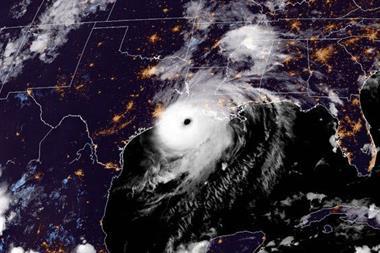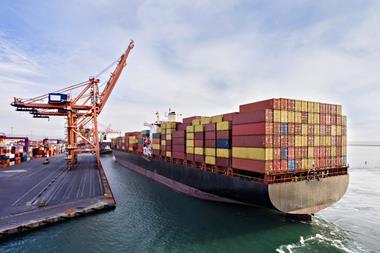Should we be surprised by the speed and magnitude of supply chain failures - or should we be better prepared?
Risk professionals need to seize the opportunity to learn some of the lessons of the past two years in order to strengthen supply chains. This is according to a panel of experts speaking on Day One of the Airmic 2022 Conference in Liverpool.
The velocity of disruption emanating from the global pandemic, Russia-Ukraine war and other major events – including natural and manmade catastrophes – took many corporates by surprise.
Indeed, supply chain disruption is second on the list of concerns for this year’s Airmic survey – suggesting it is a risk that is keeping risk managers awake at night.
“We’ve seen two examples of systemic risk and that suggests we need to do more horizon scanning,” said Sharon Palmer, head of analytics, Centre of Excellence, WTW. ”We need to look at what’s coming next and how do we adapt supply chains to get ready for that.”
Ripple effects
Often, it is not the main event but the secondary impacts that can blindside you, they pointed out. With the Texas freeze, it was the inability to access power supplies that caused major disruption to production lines.
“People are now more aware,” said Adrian Oxley, principal engineer, Semiconductor/Digital at FM Global. “The data is coming back and lessons take time to filter through.”
“A lot has been learned and now is the time for people to act on what has been learned,” he continued. “We’ve been short of semiconductors for years, but then everything came together and the industry is now saying, We need to invest more and counter these risks.”
“I hope we don’t not learn from [the events of the past two to three years]. We should all be a lot wiser.”
Complex, interconnected world
The world of global trade and manufacturing remains highly interconnected and vulnerable to events that may occur a long distance away.
Oxley gave the example of two fires at facilities in Japan which supply motor manufacturers with essential sensors and audio components. Despite the critical importance of these providers, neither factory contained sprinklers.
Thinking ahead and doing the right sort of scenario analysis is one way of testing contingency and business continuity plans.
You almost have to be able to predict the unpredictable, thought Xavier Mutzig, group insurance and insurable risk director at Johnson Matthey.
“I would much rather sit with a cup of tea and play ‘let’s pretend’ rather than deal with it post loss,” said Caroline Wooley, director and practice leader, UK and Europe at Meaden & Moore. “It’s just easier if we can do it pre-loss.”
“Ask what are the events that can happen and are they insurable?”
There are a number of ways to improve supply chain resilience, including utilising the latest data, technology and advanced analytics to map out the complexities within the value chain and spot vulnerabilities.
AI, machine learning and blockchain are among the technologies that can offer real insight beyond the first and second tier suppliers.
Time to look ahead
“None of this is new, we just need to become more forward looking and proactive,” said Tom Teixeira, partner at Arthur D Little. “It’s about the correct application of KRIs.”
Use of multiple suppliers, getting the balance right between ‘just-in-time’ versus ‘just-in-case’, near-shoring, scenario planning and working with insurance partners to gain access to data and risk indices are part of a best practice approach to supply chain risk management.
The changing geopolitical landscape is prompting some corporates to relocate critical suppliers. Major manufacturers, including Samsung and TSMC (Taiwan Semiconductor Manufacturing Company) are investing in facilities in the US, for instance.
“The geopolitical landscape is having a significant impact on where money is being deployed to build the factories,” said Oxley. But it can take two to three years to build a facility, he pointed out, adding: “Who knows what the market is going to look like then?”
Learning the supply chain lessons from major shocks doesn’t have to involve looking at failure. It can also be about looking at success, thought Wooley. Those companies that came through the pandemic with their share price intact are the ones to learn from.
She advocates an inside-out approach and quantifying the exposure wherever possible. This way risk managers can explain the value of their investments in mitigating losses.
“It’s all about the numbers – they are the international language of business. If you can put a value on an exposure it focuses everyone’s attention.”
Airmic 2022: Brace for turbulence ahead
- 1
- 2
- 3
 Currently reading
Currently readingAirmic 2022: Lessons in supply chain disruption
- 4
- 5
























No comments yet